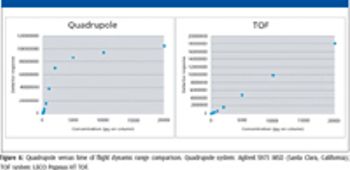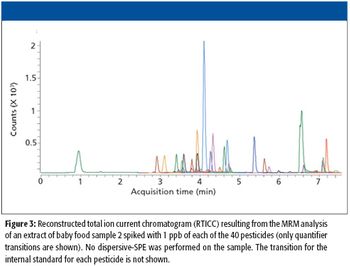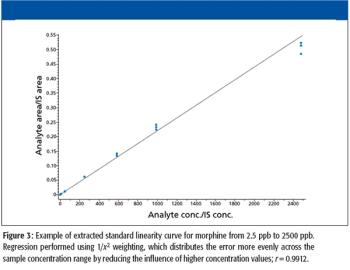
Special Issues
LCGC and Spectroscopy review some of the highlights and award recipients from this year's ASMS conference, held May 23–27, 2010, in Salt Lake City, Utah.

Special Issues
LCGC and Spectroscopy review some of the highlights and award recipients from this year's ASMS conference, held May 23–27, 2010, in Salt Lake City, Utah.

Special Issues
A discussion on the analytical challenges that both liquid chromatography and mass spectrometry face as well as some potential solutions to these issues.

Special Issues
Many volatile organic compounds (VOCs) found in a variety of consumer products are potentially harmful to human health and the environment. Within industry, to regulate product safety and quality, methods for measuring specific VOCs in a product, typically by thermal desorption gas chromatography–mass spectrometry (TD-GC–MS), are implemented. Such analysis provides a comprehensive VOC profile. However, the nature of some products, such as food, can be chemically complex. Within this complexity, trace-level or coeluting compounds can be difficult or time-consuming to identify. As a potential solution, new software tools are being developed to automate interpretation of the data.

Special Issues
The authors explain some of the primary differences between quadrupole and time-of-flight mass analyzers and provide information regarding the benefits of each in their use for gas chromatography applications.

Special Issues
The safety of the food that our children eat is a global concern. Regulations are in place that limit the maximum level of pesticides that can be present in food meant for children, and methods to detect levels well below those limits are needed to ensure the safety of the food supply. Combining the speed and separation efficiency of ultrahigh-pressure liquid hromatography (UHPLC) with the sensitivity and selectivity of triple-quadrupole mass spectrometry (MS)-MS results in a method that can deliver ultralow quantification of pesticides in baby food, with limits of detection more than an order of magnitude below the allowed maximum levels.

Special Issues
With May's ASMS Conference now receding in the collective rearview mirror of the industry, the summer is as good a time as any to take stock of the analytical chemistry marketplace. This year's show, held in Salt Lake City, Utah, demonstrated once again the vitality and robustness of the field of mass spectrometry, as innovation and technological advancement were in evidence everywhere you looked.

Special Issues
The increasing use of pesticide testing coupled with reductions in maximum permissible residue levels of pesticides in food have driven demand for fast, sensitive, and cost-effective analytical methods for high-throughput screening of multiclass pesticides in food. Detection of 510 pesticides at low parts-per-billion levels can be achieved within minutes using orbital trap technology. The high resolving power of these systems enables accurate mass confirmation of all compounds, including isobaric pesticides. This article will provide an overview of current legislation and illustrate how mass spectrometry instrumentation can enable fast and accurate pesticide screening.

Special Issues
Fast turnaround time is critical in the clinical testing environment. Here, fast liquid chromatography (LC) technologies were utilized for the comprehensive assay of commonly prescribed pain management drugs in under 2 min. The use of fast LC also provided significantly improved sensitivity. A mini-validation for these analytes in human urine was performed and acceptable values for accuracy, precision, linearity, lot-to-lot variability, and matrix effects were demonstrated for each analyte.